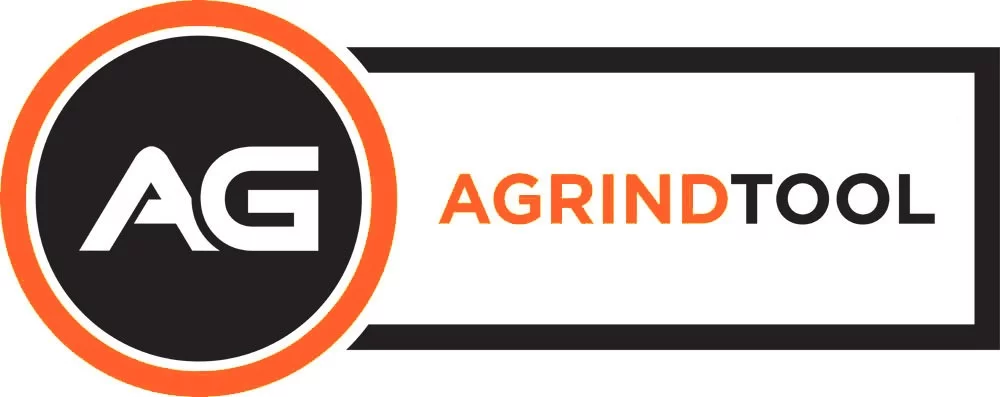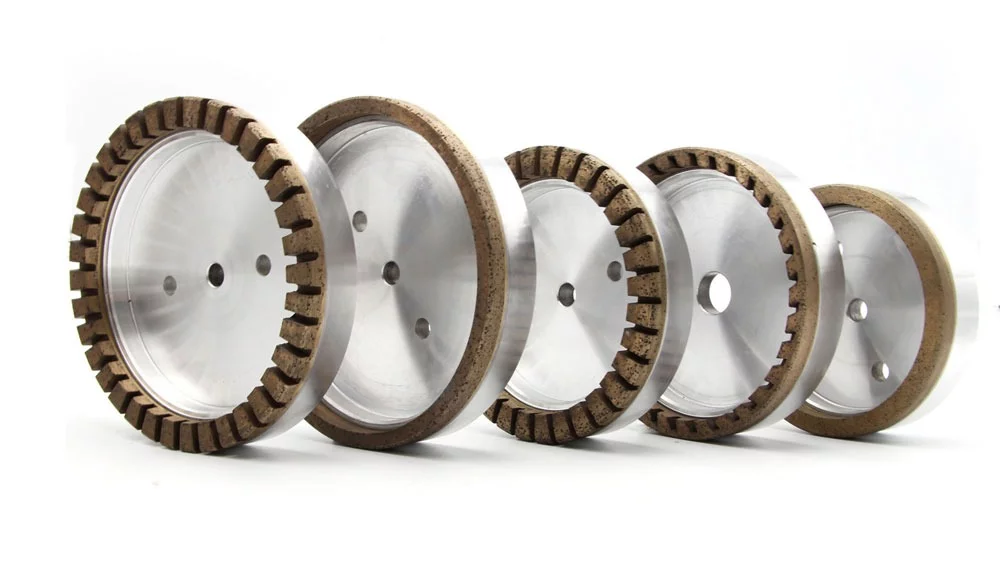
What is a Grinding Wheel?
A grinding wheel is an abrasive tool with thousands of cutting points on its surface with different abrasive grains held in place through a bond matrix and separated by pores. These abrasive grains perform the same function just like the teeth like a saw. The only difference is, in a grinding wheel, the abrasive grains are distributed throughout the surface of the wheel compared to a saw where its teeth are placed on its edge. Most of the time, grinding wheels are used for metal removal, dimensioning, and finishing. To further know the details regarding grinding wheels, here's a short grinding wheel selection that you can use as a reference.
Grinding Wheel Selection Guide
Grinding wheels comes in various abrasive types, grains, grits, shapes and sizes, and other specification. Here’s a detailed grinding wheel selection guide that you can use in choosing the perfect grinding wheel.
Abrasive Types – Grits and Grains
The two major components of a grinding wheel are its abrasive grains which are the main source of the cutting process and the bond material that holds the grains together and support the wheel in the whole cutting operation. Every abrasive type has its own distinct properties when it comes to hardness, strength, fracture toughness, and resistance to impact.
Aluminum Oxide
It is the most common use abrasive for grinding wheels and most commonly used industrial mineral to form ceramic grains. This type is usually used for grinding carbon steel, alloy steel, high-speed steel, annealed malleable iron, wrought iron, bronzes, and other similar metals.

Silicon Carbide
It is a synthetic abrasive grain that is quite harder compared to aluminum oxide. This type is usually used with nonferrous materials like titanium, aluminum, and brass. It is also used to grind gray iron, chilled iron, brass, soft bronze and aluminum, stones, rubber, etc.
Zirconia Alumina
This is another type of abrasive that is composed of different percentages of aluminum oxide and zirconium oxide. With this combination, the wheel is much tougher and more durable and suits well rough grinding applications like cut-off operations on steels and steel alloys.

Ceramic aluminum oxide
It is a ceramic form of aluminum oxide which is harder and sharper compared to other conventional abrasive grains. This is the newest major development in abrasives which is a high-purity grain produced in a gel sintering process. This type is exceptionally hard and strong in which it is commonly recommended for precision grinding on steels and alloys.

Cubic Boron Nitride (CBN)
This is another super abrasive type that provides superior grinding performance, especially on carbon and alloy steels. CBN is considered the second hardest material next to diamond which makes it highly recommended for hard to rough grinding works.

Diamond
Diamond grinding wheels are the most expensive abrasive type with their highly durable and strong structure. Diamond is characterized as the hardest material on earth in which diamond grinding wheels are commonly used for grinding extremely hard materials such as carbide cutting tips, gemstones, and concretes.

Bond Types
For a grinding wheel to perform excellently, the wheel must contain a proper bond that holds the abrasive grains together to cut effectively. Bonds work in a way that the abrasive grains wear and exposed a new sharp grain.
In conventional grinding wheels, there are three major types of bonds commonly used. Each type has its own distinct characteristics to the grinding action of the wheel. Selecting the bond type will depend on some factors such as the operating speed, grinding operation, the required precision, and the material to be ground.

Vitrified Bond
It is a type of bond which is composed of a mixture of selected clays. The abrasive grains and the clay material is being fused into molten glass condition at the highest temperatures to form this type of bond. The glass will be cooled and form a span that attached the grain to it and supports the grain during the grinding operation. Vitrified bonds are known as very rigid, strong, and porous where they remove stock material at a commonly high level but still grind to the required precision rate. It is also characterized as very hard but similarly brittle like glass as it broke down by the grinding pressure.

Resin Bond
This is an organic substance bond type that usually softens when placed under the heat of grinding. This bond type is made of synthetic resin and they are a good choice for applications that needs rapid stock removal and requires better surface finishes. Resin bonds are mostly used by fabrication shops, foundries, billet shops, and saw sharpening and gumming fields, where the wheels are designed to operate at higher speeds.

Rubber Bond
This is also an organic bond that is known to offer smooth grinding action. Grinding wheels with this bond type are commonly used for high-quality finishes like ball bearing and roller bearing races. Another application of rubber as a bond is for cut-off wheels where burr and burn are held to a minimum level.
Grit Size
Grit sizes are often based on standards set by some countries like the ANSI (U.S,), FEPA (European), JIS (Japanese), and Micron-graded standards. When selecting the grit size of the grinding wheel, you have to know if you will be needing a coarser grit size or a finer grit size.
- Coarser grit size – can be used when the neatness of the surface finish is not essential to the result. Always remember that the coarser your grit size, the more rapid the stock removal can be. This makes it very much suitable for wide areas of contact.
- Fine grit size – this is used when the surface finish is important in the workpiece. If your project requires a closer and more precise operation over a small area of contact, then you have to choose a finer grit size. The commonly suitable materials for fine gritted abrasives are those that are hard and potentially brittle materials like glass, tool steel, and cemented carbide.
Grade or Holding Power
Choosing the wheel grade indicates the holding power of the bond which holds the abrasive grains. Here are some points you can use in selecting the grade of your grinding wheel.
- Soft Grades: These are recommended for hard materials like hard tool steels and carbides. Soft grade wheels are suitable for large contact areas which provide rapid stock removal rates.
- Hard Grades: These are recommended for soft materials that cover small or narrow areas of contact. Hard grade wheels can guarantee longer service wheel life compared to soft grade wheels.
Wheel Shape
Grinding wheels comes in various shapes for specific griding applications. Illustrated below are different forms of grinding wheels. Most of these shapes have evolved because of their utility and robust nature.

Other Specifications and Features
Here are other details that you have to consider when looking for the right grinding wheel. Take time to read some of our guiding wheel selection guide specifications and features.
Metal Bond Systems
This is often used for super abrasive or tungsten carbide grit products. There are three basic metal bonds:
- Sintered Metal bond - these are used for wheels that need a thicker layer of super abrasive.
- Metal Single-layer (MSL) – this is used for wheels that are consists of specialized braze layers that form a single layer of super abrasive
- Electroplated bond–grinding wheels with the bond system are used to produce super abrasive tools with fine grits.
Mounting Options
This can also be used where the device is mounted with a plate, quill, or using a quick-change instrument.
Outer diameter (OD), Inner diameter (ID), Thickness, and Rotary Speed
These are other specifications you can look into when choosing your preferred grinding wheels.
There’s still more information you have to learn about grinding wheels. The abrasive types, sizes, shapes, and specifications constitute special grinding applications. It is very important to know first what kind of abrasive you want to use, what type of materials to be ground, what stock to be removed, and other important factors that might affect your preference. May this grinding wheel selection guide help you in choosing the right and perfect grinding wheel for your work.

